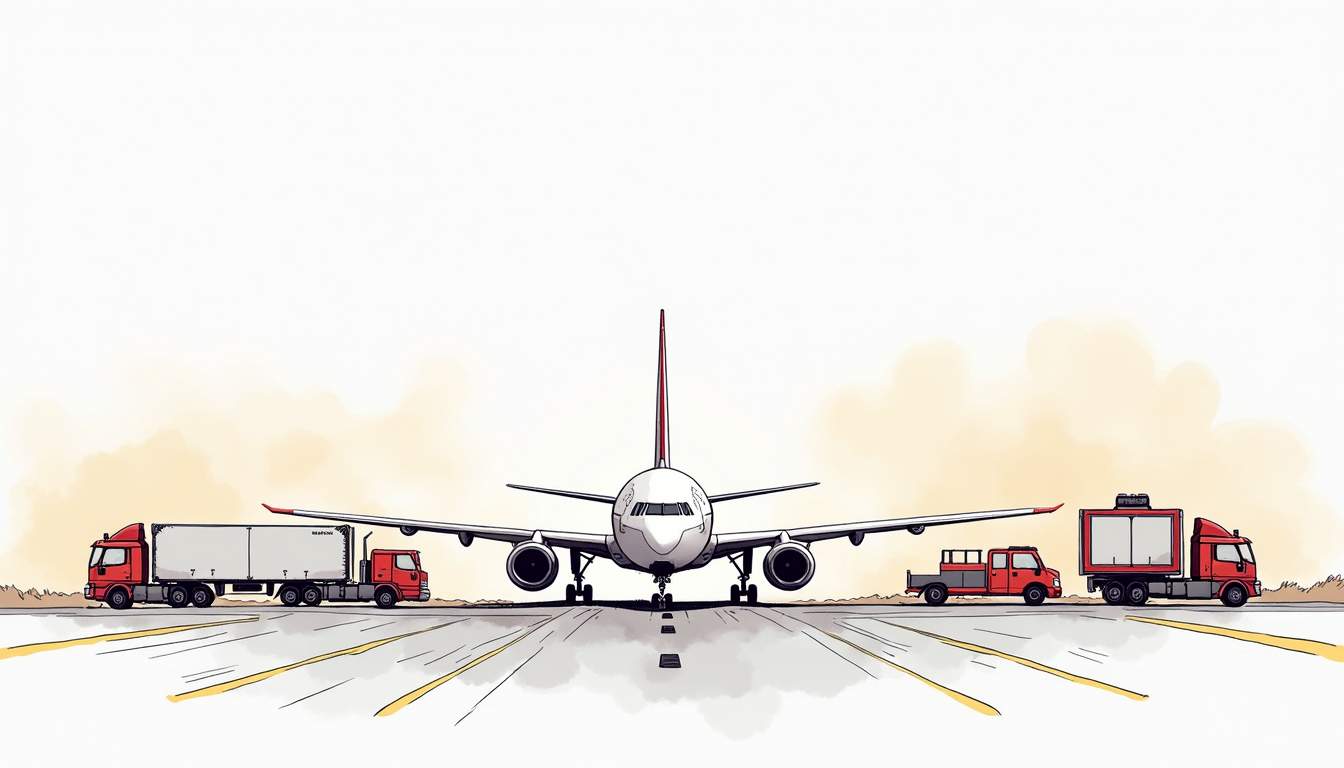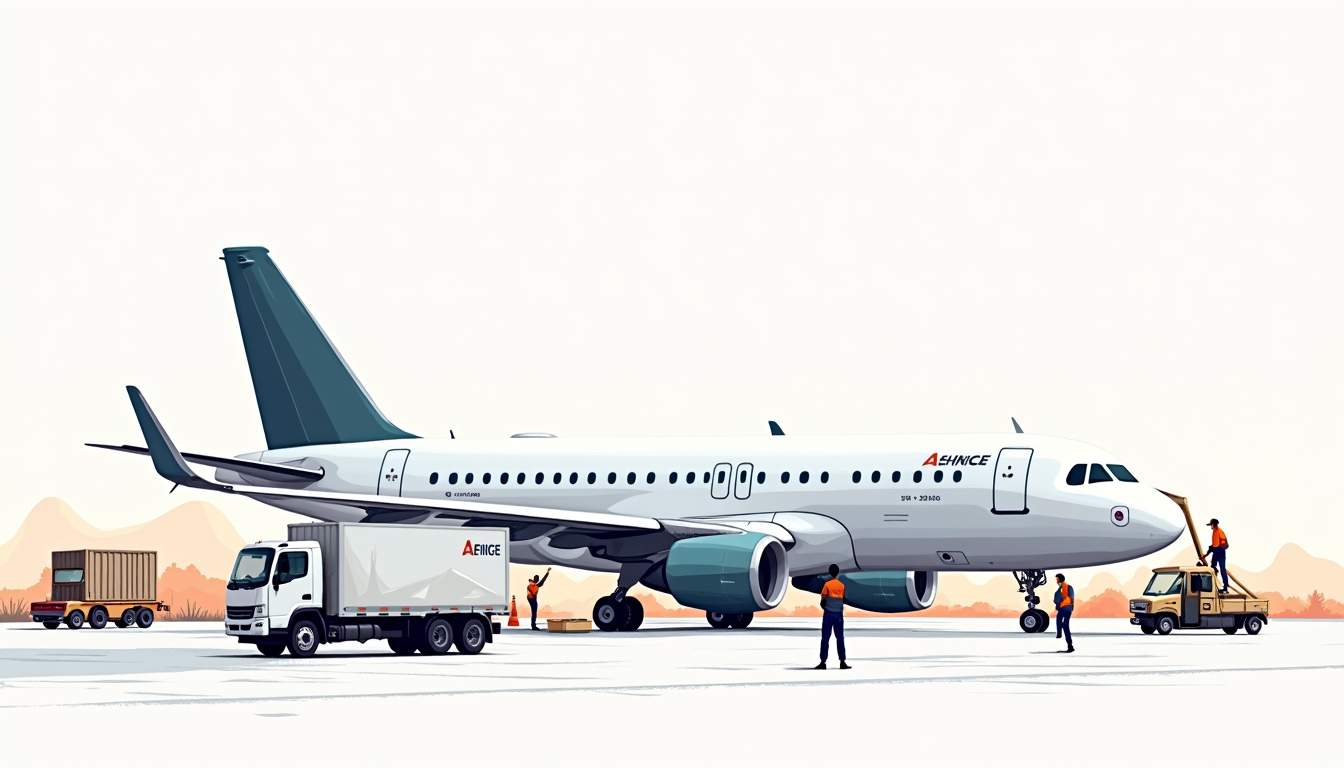Aircraft on Ground (AOG) situations represent a critical challenge in the aviation industry. When an aircraft is grounded due to technical issues or maintenance needs, the implications can be significant, affecting flight schedules, passenger travel, and overall airline operations. Understanding AOG logistics is essential for minimizing downtime and ensuring that aircraft are back in the air as quickly as possible. This article delves into the definition of AOG, its importance, emergency logistics solutions, the role of on-board couriers, and strategies for effective AOG management.
Understanding AOG: Definition and Importance
Definition of AOG
Aircraft on Ground (AOG) refers to a situation where an aircraft is unable to fly due to technical failures, maintenance requirements, or other operational issues. This status can arise from various factors, including mechanical failures, lack of essential spare parts, or regulatory compliance issues. When an aircraft is classified as AOG, it signifies that immediate action is required to resolve the issue and return the aircraft to service.
The term AOG is commonly used in the aviation industry to convey urgency. Airlines and maintenance teams prioritize AOG situations to minimize the impact on flight schedules and customer satisfaction. The faster an aircraft can be repaired and returned to service, the less disruption there will be to airline operations and passenger travel. For instance, airlines often have dedicated teams that specialize in AOG management, ensuring that resources are allocated efficiently and that communication channels remain open between ground crews, maintenance teams, and flight operations. This level of coordination is crucial, as it can mean the difference between a minor delay and a significant operational crisis.
Significance in Aviation Industry
The significance of AOG in the aviation industry cannot be overstated. AOG situations can lead to substantial financial losses for airlines due to canceled flights, delayed schedules, and dissatisfied customers. Furthermore, the ripple effect of a grounded aircraft can disrupt not only the airline’s operations but also those of airports, ground services, and other stakeholders. For example, when a flight is canceled due to an AOG situation, it can lead to a cascade of rebookings and logistical challenges for passengers, creating a ripple effect that impacts other flights and services at the airport.
In a highly competitive industry where customer loyalty is paramount, minimizing AOG incidents and ensuring rapid response times are critical for maintaining a positive reputation. Airlines that effectively manage AOG situations are better positioned to provide reliable service and retain customer trust. Additionally, the implementation of advanced technologies, such as predictive maintenance and real-time monitoring systems, has become increasingly important in mitigating AOG events. By leveraging data analytics and machine learning, airlines can anticipate potential issues before they escalate, thereby reducing the likelihood of an aircraft being grounded unexpectedly. This proactive approach not only enhances operational efficiency but also contributes to the overall safety and reliability of air travel, which is essential in today’s fast-paced aviation environment.
AOG: Emergency Logistics Solutions
Importance of Timely Response
In the context of AOG, time is of the essence. The longer an aircraft remains grounded, the greater the financial and operational repercussions. Timely response to AOG situations is crucial for several reasons. Firstly, it helps to mitigate the costs associated with delays and cancellations. Secondly, a swift response can enhance customer satisfaction by minimizing inconvenience for passengers. In an industry where reputation is paramount, the ability to quickly resolve AOG incidents can differentiate one airline from another, fostering loyalty among travelers who prioritize reliability.

Emergency logistics solutions are designed to facilitate rapid mobilization of resources, including spare parts, technical expertise, and support services. Airlines often establish partnerships with logistics providers that specialize in AOG situations to ensure that they have access to the necessary resources at a moment’s notice. These partnerships not only streamline the logistics process but also allow airlines to leverage the expertise of specialized providers who understand the nuances of AOG challenges. Additionally, the integration of technology, such as real-time tracking systems and predictive analytics, further enhances the ability to respond swiftly and efficiently to any AOG event.
Key Components of AOG Logistics
AOG logistics encompasses several key components that work together to ensure a swift resolution to grounded aircraft. These components include:
- Supply Chain Management: Efficient management of the supply chain is critical for ensuring that spare parts and components are readily available when needed. This involves not just having parts in stock, but also anticipating demand and maintaining relationships with multiple suppliers to avoid bottlenecks.
- Transportation Solutions: Rapid transportation options, such as air freight and on-board courier services, are essential for delivering parts and personnel to the aircraft’s location quickly. The choice of transportation method can significantly impact the speed of resolution, making it vital for logistics teams to evaluate the best options based on distance, urgency, and cost-effectiveness.
- Technical Support: Access to skilled technicians and engineers who can diagnose and repair issues promptly is vital for minimizing downtime. This often involves having a network of qualified professionals on standby, ready to deploy at a moment’s notice, as well as ensuring they are equipped with the latest tools and information to handle a variety of aircraft models and systems.
By integrating these components into a cohesive AOG logistics strategy, airlines can effectively address the challenges posed by grounded aircraft and ensure a swift return to service. Furthermore, the implementation of a robust communication framework among all stakeholders—airlines, maintenance teams, logistics providers, and regulatory bodies—plays a pivotal role in the success of AOG operations. This ensures that everyone involved is aligned and informed, allowing for a more coordinated response that can significantly reduce the time an aircraft remains out of service. Additionally, ongoing training and simulations for AOG scenarios can prepare teams to react swiftly and efficiently when real incidents occur, further enhancing operational resilience.
Role of On Board Couriers in AOG Situations
Services Offered by On Board Couriers
On-board couriers play a pivotal role in AOG situations by providing expedited logistics services tailored to the unique needs of the aviation industry. These couriers are trained professionals who travel on commercial flights to deliver urgent parts and documents directly to the aircraft or maintenance facility.

The services offered by on-board couriers include:
- Fast Delivery: On-board couriers can bypass traditional shipping methods, ensuring that critical components reach their destination quickly.
- Real-time Tracking: Many courier services provide tracking capabilities, allowing airlines to monitor the status of deliveries in real-time.
- Customs Clearance: Experienced couriers are often familiar with customs regulations, facilitating smooth cross-border transport of parts.
Benefits of Using On Board Couriers
The use of on-board couriers in AOG situations offers several benefits that can significantly enhance the efficiency of logistics operations. Firstly, their ability to travel on commercial flights means that they can deliver parts much faster than traditional ground shipping methods. This speed is critical in minimizing aircraft downtime.
Secondly, on-board couriers provide a level of flexibility that is often lacking in standard logistics solutions. They can adapt to changing circumstances, such as flight delays or changes in aircraft location, ensuring that deliveries are made as efficiently as possible.
Lastly, the expertise of on-board couriers in handling aviation logistics can lead to fewer errors and complications during the delivery process, further streamlining AOG operations. Their training often includes a deep understanding of aviation protocols and safety regulations, which allows them to navigate complex environments with ease. This specialized knowledge not only enhances the reliability of the service but also fosters trust between airlines and courier companies, as they can be assured that their critical shipments are in capable hands.
Moreover, on-board couriers often establish strong relationships with airline personnel and maintenance teams, which can further expedite the delivery process. These connections can lead to quicker approvals for access to restricted areas, ensuring that time-sensitive parts are delivered directly to the technicians who need them. This level of personal interaction can be invaluable in high-pressure AOG scenarios, where every minute counts and the stakes are high. In essence, on-board couriers are not just delivery agents; they are integral partners in the aviation industry’s commitment to safety and efficiency.
Ensuring Effective AOG Management
Strategies for Streamlined Logistics
Effective AOG management requires a proactive approach to logistics. Airlines can implement several strategies to streamline their AOG logistics processes:

- Establishing Partnerships: Collaborating with specialized logistics providers and on-board courier services can enhance response times and resource availability.
- Investing in Technology: Utilizing advanced tracking and communication technologies can improve visibility and coordination during AOG situations.
- Training Staff: Ensuring that staff are trained in AOG protocols and emergency response can lead to quicker decision-making and more effective problem resolution.
By adopting these strategies, airlines can create a more resilient and responsive AOG logistics framework that minimizes the impact of grounded aircraft on their operations.
Challenges in AOG Situations and Solutions
Despite the best efforts to manage AOG situations, challenges can still arise. Common challenges include:
- Supply Chain Disruptions: Unexpected delays in obtaining spare parts can hinder timely repairs.
- Geographical Limitations: Aircraft located in remote areas may face logistical hurdles in accessing necessary resources.
- Regulatory Compliance: Navigating customs and regulatory requirements can complicate the transport of parts across borders.
To address these challenges, airlines can develop contingency plans that outline alternative sourcing options, establish relationships with multiple suppliers, and leverage technology to enhance communication and coordination. By anticipating potential obstacles and having solutions in place, airlines can minimize the impact of AOG situations on their operations.
In conclusion, understanding Aircraft on Ground (AOG) logistics is essential for maintaining operational efficiency in the aviation industry. By prioritizing timely responses, leveraging on-board couriers, and implementing effective management strategies, airlines can navigate the complexities of AOG situations and ensure that their aircraft remain in the air, serving passengers and maintaining their reputation for reliability.
Streamline Your AOG Logistics with Freighter Gator
When facing an Aircraft on Ground situation, every second counts. At Freighter Gator, we understand the urgency and provide tailored air cargo charter solutions to get your critical parts and equipment where they need to be, swiftly and securely. Our global reach and commitment to punctuality mean you can trust us to support your AOG needs and keep your operations running smoothly. Don’t let logistics challenges keep your aircraft grounded. Request a Quote today and experience the peace of mind that comes with Freighter Gator’s reliable air freight services.
